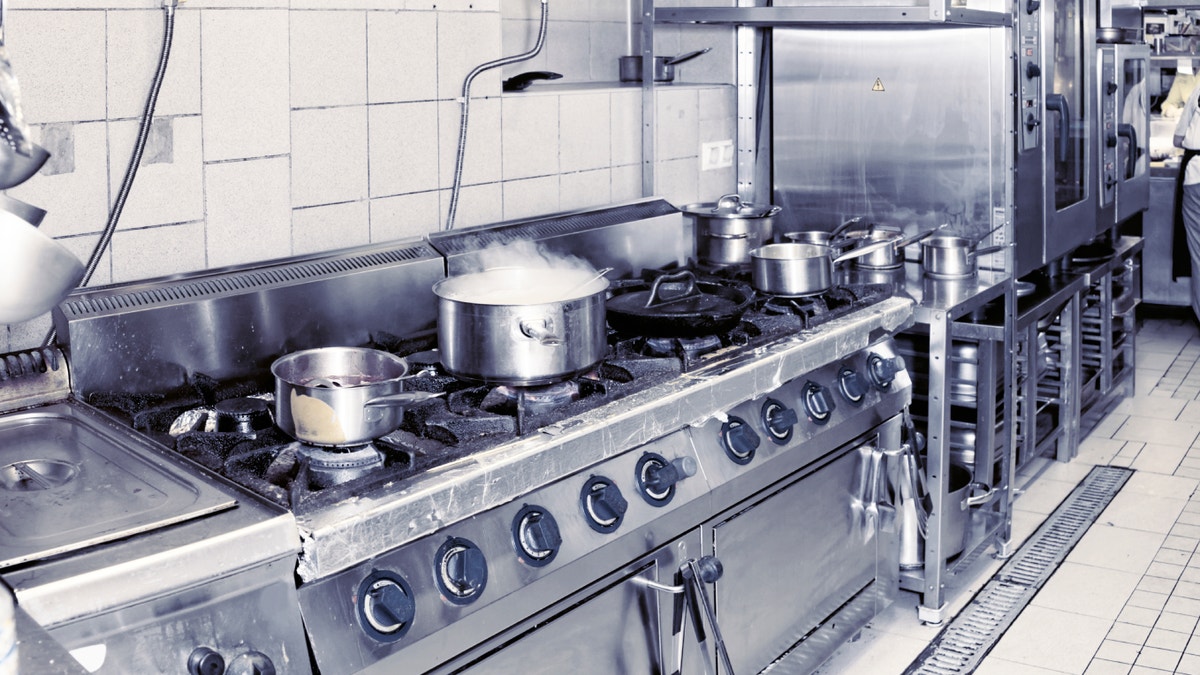When we set out to cook a meal, be it for our family or a romantic evening for two, we always have a vision in our minds of what we want the finished product to look and taste like. That vision usually closely resembles what you might find at a restaurant, with elegant plating, refined flavors, and precise cooking. Unfortunately, what ends up on the plate in our homes rarely (if ever) comes close to what you’ll find in a restaurant, and there are several reasons why.
Restaurant kitchens run like well-oiled machines. The equipment is heavy-duty, the tools are the perfect ones for the job, and the cooks know every recipe like the back of their hand — or, more precisely, know how to make all the food on their menus without consulting recipes more than once, if that. Home kitchens may look nice, but they’re almost never well-equipped for turning out restaurant-quality meals.
Aside from the fact that in restaurant kitchens everything is prepped and ready to go ahead of time, at home the knives aren’t as sharp, the recipes might not be memorized, and, well, the person cooking the food isn’t a professional chef. And there’s a big difference between someone following a cookbook recipe step-by-step and a chef turning out a dish he or she has made a thousand times before.
So don’t despair, home cook. While the skin on that piece of trout might never be as crisp coming from your nonstick pan as it would be coming from a well-seasoned cast-iron skillet, a home-cooked meal still has advantages over ones from a restaurant kitchen. For one, it's made by you and meant to be shared with friends and family. And at the end of the day, if it tastes good and is made with love, it doesn’t need to look like it came from a restaurant. In fact, that might even defeat the purpose of it. Read on to learn why home-cooked dishes will never taste like restaurant food.
1. Salt

Hand adding salt using a salt shaker (iStock)
To paraphrase Alton Brown, “salt makes food taste more like itself,” and in restaurants the cooks aren’t afraid to have a heavy hand with the salt shaker. They season every component of every dish, at every step of the cooking process, and only the most sensitive customers are likely to complain about a dish being too salty. Especially when cooking whole pieces of meat (like steaks or pork chops), always add a little more salt than you think they might need.
2. Hot ovens

Real restaurant kitchen shot in operation, complex toned image (iStock)
Ovens in restaurants are often blasting at full tilt all night, cranked up to 500 degrees or more. While not appropriate for every dish, high heat cooks things faster, develops a nice crust and deep browning, and puts the finishing touch on dishes prepared on the cooktop. It also can create a lot of splatter, so be prepared to clean your oven more often if you decide to use this technique at home.
3. Shallots

(iStock)
You’d be amazed at the amount of shallots many restaurants go through. Shallots work in just about any savory dish, and have a milder flavor than onions or garlic. Dice them up and add them early on in the cooking process; they add a great depth of flavor.
4. Stock

(iStock)
Many fine restaurants make their own stocks with leftover vegetables, meat, and bones, and it adds a wallop of flavor to any dish, especially when reduced. If you’re looking to add an umami kick to your next dish, don’t forget about stock. When used to deglaze a frying pan and tightened up with a little butter, it’s the makings of a great sauce.
5. Butter

(iStock)
Fat is flavor, as they say, and at restaurants the easiest way to dial up flavor is by adding butter. You know that nutty flavor of those roasted vegetables, or the silky texture of that sauce? It’s all in the butter.
6. Presentation

traditional italian food lasagna. meal on plate (iStock)
We eat with our eyes before our mouths, and restaurants spend a whole lot of time figuring out how a finished dish should look, from what kind of plate to use to which garnish pairs best. Put a little extra care into plating, and your guests will be very impressed.
Learn why a restaurant meal will always taste different than your home-cooked one.
More from The Daily Meal
America’s 25 Favorite Home-Cooked Dishes
Reasons Why Restaurant Kitchens are Better than Yours




















